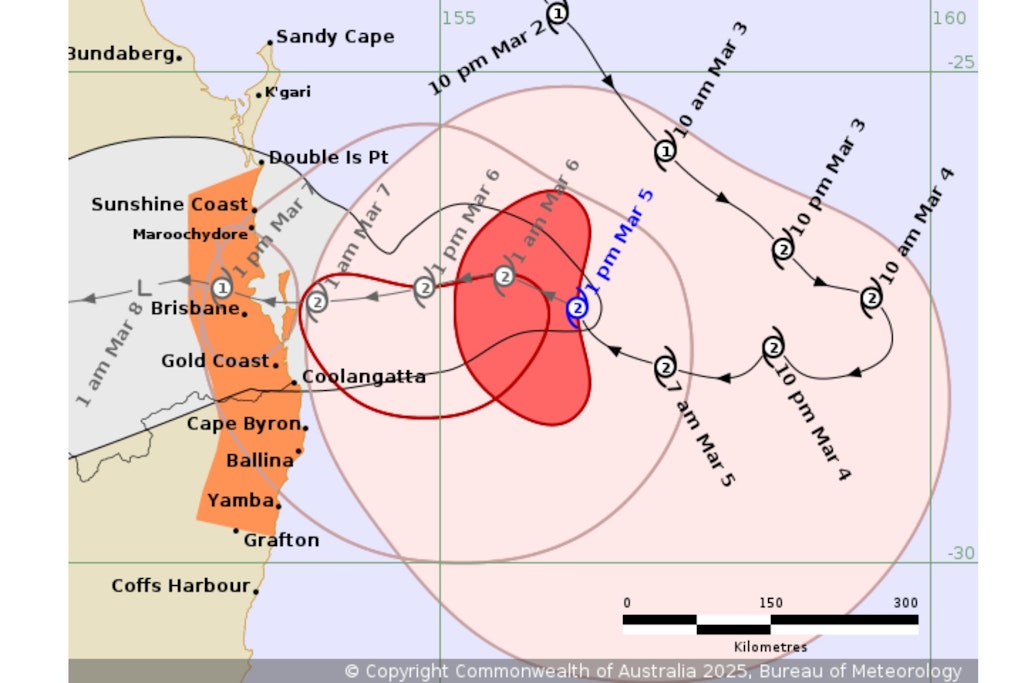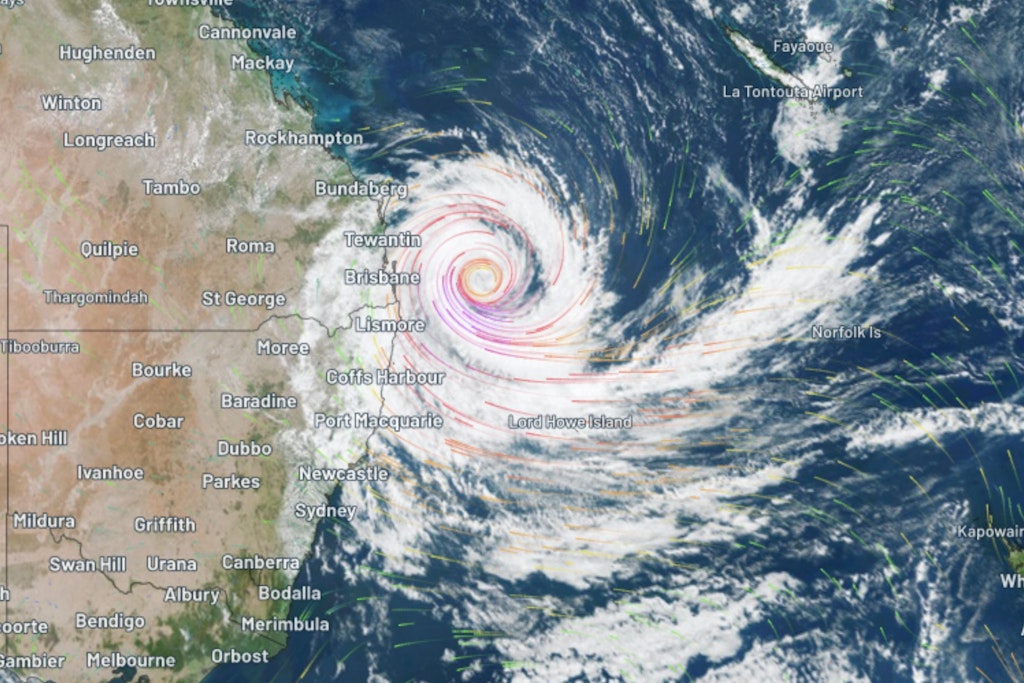Tropical Cyclone Alfred: Useful links and tips for aged care providers
Published on 5 March 2025 (Last updated on 1 April 2025)

Tropical Cyclone Alfred is forecast to cross the south-east Queensland coast overnight on Thursday and into Friday morning, with a warning zone stretching past the Sunshine Coast through to Byron Bay and Ballina in New South Wales.
Currently listed as a Category 2 Tropical Cyclone, it’s set to bring destructive winds and the risk of life-threatening flooding. More than 800mm of rainfall is predicted, with a high chance that Tropical Cyclone Alfred makes landfall at high tide.
Hello Leaders contacted Get Ready Queensland, part of the Queensland Government (Queensland Reconstruction Authority) for tips and resources to help aged care providers, staff, residents and clients prepare for Tropical Cyclone Alfred.
Stay informed with cyclone information
It’s crucial to stay informed on the path, severity, and impact of Cyclone Alfred as it develops. Trusted sources like the Bureau of Meteorology (BOM) and local council disaster dashboards will provide the most accurate and timely updates. Key links include:
- The Bureau of Meteorology – BOM also has a Tropical cyclone map and Youtube updates
- Get Ready Queensland – This includes relevant local disaster information from local councils
- Get Ready New South Wales
- ABC News – Alongside regular broadcasts from ABC Emergency on ABC Radio, the national news provider is also operating an ongoing blog with live updates
For life-threatening emergencies, call 000, and for non-urgent assistance contact SES at 132 500 or use the SES Assistance QLD App. Both SES QLD and SES NSW will have more information on their websites.
Understand cyclone warnings and their implications
Familiarise yourself with the different cyclone warning levels to understand the urgency of the situation. These warnings are critical in guiding your response actions to ensure staff and residents are safe throughout the event.
As of Wednesday afternoon, Tropical Cyclone Alfred is listed as Category 2, which predicts:
- Destructive winds. Minor house damage. Significant damage to signs, trees and caravans. Heavy damage to some crops. Risk of power failure. Small craft may break moorings
- Maximum mean wind speed 89–117 km/h
- Typical strongest gust 125–164 km/h
There is a chance it will be upgraded to Category 3 (there are five categories overall).

Know the specific risks for your facility
Providers must assess each facility’s location to determine whether you are in the path of the cyclone. This will help you understand how Tropical Cyclone Alfred may affect your area, including possible flooding, wind damage, and power outages.
While providers should have preparations in place well in advance, the Queensland Government’s Residential Aged Care – Planning Resource is still a valuable tool filled with critical information.
This knowledge will allow you to make informed decisions about your emergency plan and resources.
Examples include taking proactive measures to secure your facility from the impact of high winds and heavy rainfall. This may include reinforcing windows, doors, and outdoor structures. Make sure all loose objects around the facility are brought inside or fastened securely to prevent them from becoming hazards.
Have a clear emergency plan
Being prepared for a cyclone significantly reduces risks. Review and update your facility’s emergency plan. A clear plan ensures that everyone knows their responsibilities and can act quickly under pressure.
All governments have their own emergency plan outlines, but you can access the Queensland Government’s online planner tool here.
Prepare for evacuations if necessary
In some cases, evacuation may be required. Confirm your evacuation routes are clear and easily accessible for staff, residents, and emergency services. Ensure your facility has an updated list of residents who may need additional support during evacuation, such as those with mobility challenges.
It is important to note that the movement of persons with high care needs will need to be planned and implemented in advance of unfavourable conditions and higher demand on transportation providers. Early decision-making is essential to support evacuations.
More information regarding evacuation processes can be found in the Planning Resource document.
If you are asked to evacuate, please act immediately. If you do not have a suitable location to evacuate to, each council provides updates on evacuation centres through local government disaster dashboards. The NSW Government has more information on emergency evacuations here.
Organisations with home care clients or people living in retirement communities and independent living units can help those with disabilities or limited mobility to plan for future events with the Person-Centred Emergency Preparedness (P-CEP) Workbook.

Prepare an emergency kit
Pack an emergency kit/’go bag’ with essential supplies, including food, water, medications, hygiene products, and any other necessary personal items for at least three days. This is particularly beneficial for residents who may self-evacuate/voluntary evacuate.
Check backup power systems
Check your facility has reliable backup power for essential operations, including medical equipment, refrigeration for medications, and lighting in common areas. Test back-up generators regularly to confirm they are functioning properly before the cyclone hits.
Maintain communication with families and stakeholders
Clear communication with the families of residents is vital. Ensure they are informed about your emergency plans and the steps being taken to protect their loved ones.
Consider setting up a system for regular updates throughout the event, especially if the storm causes disruptions to regular operations. This could be through social media, email, text or alternative existing communication methods.
Support residents with specific needs
It’s essential to identify residents who may need additional support, including suitable transport to evacuate them. Get Ready Queensland has a webpage on planning for disaster with a disability.
Provide psychological support for staff and residents
Cyclones and severe weather events can cause significant stress and anxiety for staff and residents. It’s important to acknowledge this and provide psychological support where necessary. Useful resources can be found through Get Ready Queensland or Red Cross RediPlan.
Stay informed about local disruptions
Stay updated on school closures and any local road or transport disruptions by monitoring sources like QLD Traffic and local council updates. If your staff or residents rely on public transport or schools have changes to care arrangements, it’s essential to know about any variations. QLD Traffic and NSW Traffic will have the latest information.
Support residents with pet care needs
If your facility cares for pets or animals, make sure they are also included in your disaster preparedness plan. Have extra supplies like food and medications for pets, and ensure they have shelter from the storm.